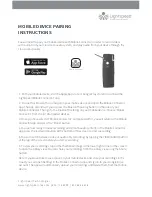
Hytera DMR System Planner
7
1.2 Hytera DMR Technology Introduction
Hytera adopts the DMR technology and makes developments in compliance with
the ETSI DMR Tier II standards.
Hytera DMR radio collects the audio signals at the microphone, converts the audio
signals to analog signals, and then converts the analog signals to digital signals. In
addition, the sampling signal should be strong enough to ensure high audio quality,
so certain techniques are required to compress the signal.
After sampling, the radio processes the signal through coding technology, to filter
the unwanted noises and make signal compression.
The encoded signal (audio or data) is then transmitted in frames. The signal with
signaling can generate a digital data packet, which consists of the header (mainly
the control and air interface information) and payload (encoded audio or data) and
can be transferred over IP network. The header information repeats periodically
during transmission, which makes the signal more reliable and realizes the late
entry function.
The framing signal gets encoded for FM transmission. The bits contained in the
digital packets are encoded as symbols representing the amplitude and phase of the
modulated carrier frequency. Finally, the signal gets amplified and then transmitted.
Summary of Contents for PD70X Series
Page 1: ...DMR System Planner ...
Page 2: ......
Page 4: ...Revision History Version Date Description Remarks R1 0 November 21 2012 Initial release ...
Page 126: ...Hytera DMR System Planner 122 Figure 1 4 Analog to digital Conversion 2 ...
Page 174: ...Hytera DMR System Planner 170 For your notes ...
Page 178: ...Hytera DMR System Planner 174 For your notes ...
Page 181: ......
Page 182: ......












































